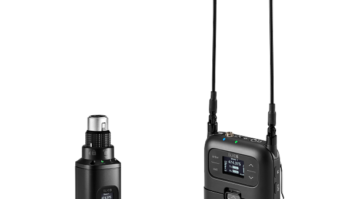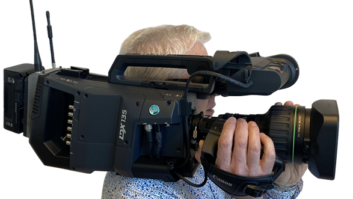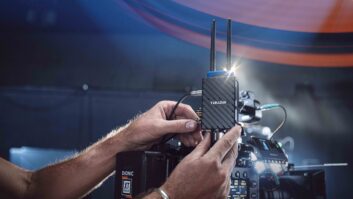Following unprecented demand on frequencies across Europe due to the rapid uptake of wireless cameras, growing HD acquisition, and the re-allocation of frequencies to mobile telephony interests, the Joint Frequency Management Group – the company contracted by telecoms regulator Ofcom to co-ordinate programme making and special events (PMSE) requirements – is introducing an online booking system in the UK this month to allow faster allocation of increasingly scarce wireless spectrum, writes Richard Dean.
Despite a UK stay of execution for the 2.5 GHz to 2.7 GHz band due to be auctioned to mobile interests at the end of last year, and the provision of replacement spectrum either side of it in 2003, all bands are now full according to JFMG MD Paul Gill. UK programme makers currently have access to channels at around 3.5 GHz, but as with the lower frequencies, this is also under threat from new users.
Spectrum below 5 GHz suits mobiles because of its ‘near line of sight’ propagation, allowing digital signals to harness reflections and effectively see around corners. However this is also helpful for broadcasters, especially for rapid news deployment where precise line of sight OB (outside broadcast) radio link expertise may not be available.
That’s why the 7 GHz band, originally designated for terrestrial contribution links that have since largely migrated to satellite uplinks, is not under threat from the mobile millionaires. JFMG has just published a provisional band plan offering 26 channels.
However experts point out that as well as demanding more precise alignment, Doppler Shift interference between DVB carriers in the higher frequency band limits its use at speed. The digital switchover of broadcast television from 2008 to 2012 could release spectrum for wireless cameras and ENG links in two bands at around 600 MHz and 800 MHz, but there is no shortage of would-be users – not least for TV broadcasting to mobiles.
Software upgrades for JFMG online later this year will support ‘challengeable pencil bookings’, where while any user can reserve future links rather than commit to a firm booking, others will have the facility to contest links not actually used.
In recent years most of the bandwidth formerly set aside for large broadcasters such as the BBC, ITN and Sky has now been put into a big pot available to all, allowing JFMG to keep guard bands (prohibited frequencies) to a minimum across the entire spectrum.
However Ofcom intends to introduce competing spectrum management companies when JFMG’s contract expires at the end of year 2007. Some fear that for commercial reasons, knowledge of spectrum useage may not be shared, so increasing the number of precautionary guard bands not available for programme links.







